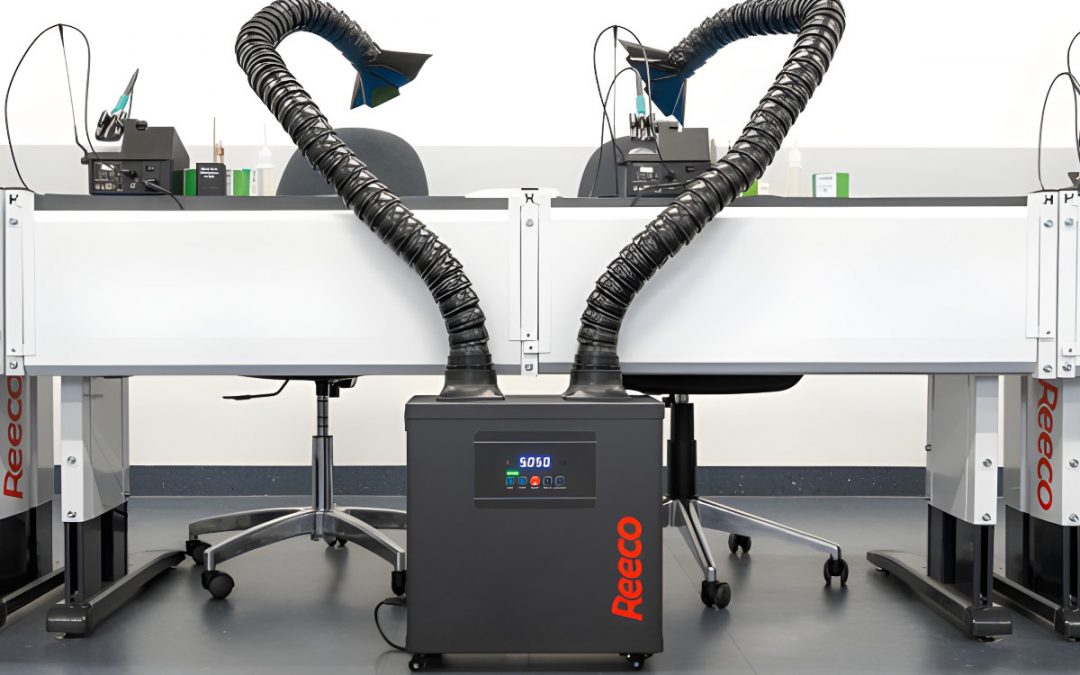Discharge-sensitive components are becoming an integral part of electronic devices. This trend is putting increasing pressure on electronics manufacturing companies. The technology itself – for now – we can’t change, so we have to create conditions where the risk of discharge is as low as possible.
Electrostatic discharge can’t be seen, and its effects are often only detected after a long time – for instance, when the product is returned in the course of a complaint. The nature of this phenomenon means that people working in manufacturing and repair companies have no real opportunity to learn from their mistakes. This is because the pattern, normal in the course of gaining experience, in which a person gets information that he has made a mistake and is motivated not to make it in the future, does not work here. The consequences of any shortcomings in this case may follow months later, when it is no longer possible to figure out what someone did wrong.
This means that the only way to neutralize this threat is to put in place the proper equipment and safeguards and get to a situation where top-down and learned anti-static protection procedures are carried out by all employees at all times. However, this seemingly simple answer to the issue of electrostatic discharge brings with it a number of practical problems both in the course of its implementation and subsequent maintenance.
For first and foremost, it requires the right know-how. What may not be intuitive, after all, the knowledge and experience possessed in the field of electronic package production does not always coincide with that of anti-static protection. This makes it not uncommon for even companies that have been operating in the industry for many years to require consulting and training support in this sphere.
The company providing such services in Poland and Central and Eastern European countries is RENEX Group. Based on more than 33 years of experience, this entity conducts a wide range of activities aimed at providing comprehensive support to the electronics industry. Through the RENEX TECHNOLOGY AND TRAINING CENTER it has created, the Group provides training and shares the knowledge needed to develop new products, create and develop process lines, increase process efficiency, implement new technologies and equipment, and – of particular relevance to this report – maintain antistatic safety. In addition, RENEX Group has developed, manufactures and supplies under its own REECO brand a series of furniture, robots, clothing and equipment dedicated to working with sensitive electronics.
First of all – EPA
In order to protect sensitive components from electrostatic discharges, so-called EPA zones are created in manufacturing companies. All surfaces in such a zone must have an adequate resistance in the range of 106 to 109 Ω inclusive, which allows electrical charges to be distributed and neutralized. This means that all production equipment, table tops, floors, racks, containers, accessories and production equipment must be made of suitable materials and technology.
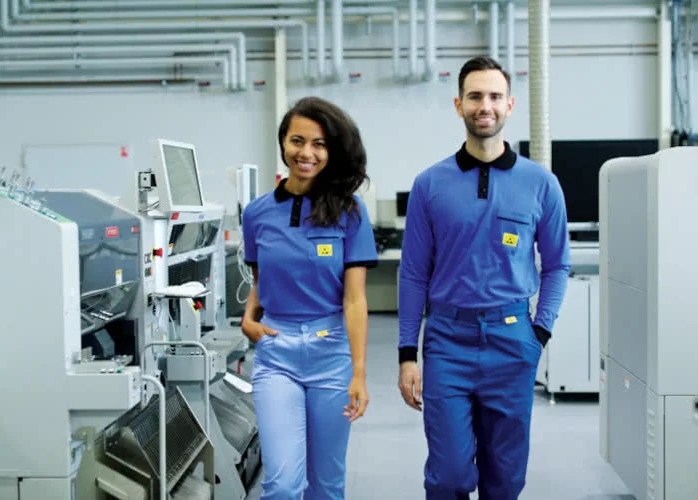
Developing solutions
What is important is that the so-called EPA zone should cover all stages of production from the place where components are received for production, e.g. in the warehouse – that is, from the moment when components packed by the manufacturer in shielding bags are unpacked – to the place where finished electronic packages are protected by placing them in shielding films or target housings. It is therefore necessary to analyze the processes taking place in the company – in reality, on site – and develop a customized zone design on this basis – the space it will cover and the workflow. To this end, RENEX specialists, at the customer’s request, perform audits of planned and already functioning electronics production zones and, based on years of experience and knowledge accumulated in all spheres of the Group’s activities, develop the most efficient solutions.
Fairly obvious factors to consider include the number of employees, production lines and workstations that must be located within the zone. They allow a preliminary determination of the size of the space that should be separated. However, practice shows that there are many other elements that should be taken into account. This includes how easy access to the zone and its immediate vicinity is for outsiders – guests of the company, but also employees of other departments. This many times determines what measures to control the movement of people entering the zone will be necessary. After all, all people in the zone should be dressed in clothing with antistatic properties (we will discuss it further later in this paper). In fact, the zone can be delineated by simple warning tapes on the floor, or stretched over posts – which is more of a notice that passage is forbidden – as well as by specialized REECO fencing systems that physically prevent passage. Also important in this regard are entry points which can be equipped with automatic gates to control those entering and their anti-static protection.
Selecting the right solutions in this sphere reduces the risks arising from human error associated with unprincipled adherence to procedures. Safeguards must be checked every time they enter the production hall, which ensures that safeguards such as shoes or anti-static bands have not lost their properties, for example, during a break due to dirt, tears or damage.
Another example of a factor that should be taken into account is the further planned and potential growth of the enterprise and what may be its consequence the relocation of production and zones to other buildings or premises. Consideration of this allows, among other things, the selection of demountable elements of equipment, including, above all, floor coverings. Such possibilities are provided, for example, by the GERFLOR anti-static flooring system, which is connected like a puzzle.
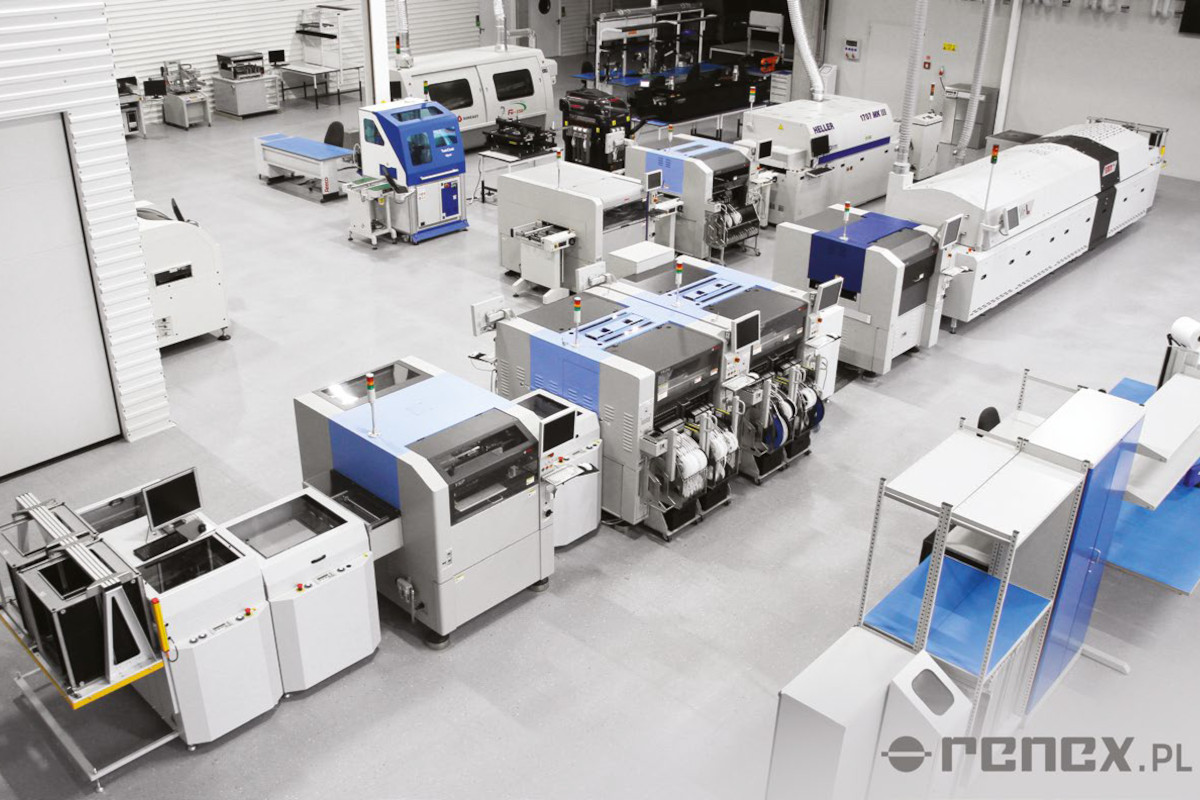
The first step here, of course, is to introduce the right workstations – selected for the tasks and processes to be carried out in a given enterprise. Ergonomics in its broadest sense is of key importance here. The use of individually tailored workstations, placing tools and components at an appropriate distance from the user and eliminating all unnecessary elements from the workfield allows not only to achieve great comfort for the employee, but also significantly increases productivity.
However, practice shows that predicting at the development stage the needs of each position and each employee and their changes over time is an almost impossible task. Fortunately, there is an alternative to this approach – the choice of modular solutions – ones that can be freely modified, reconfigured and expanded in the future. A Polish system that combines these two features – i.e., applicability to EPA zones and modularity – is REECO Antistatic Furniture, one of the aforementioned series of products manufactured in-house by RENEX Group.
One of the flagship items in this product series is the Premium Electric Antistatic Table with electrically adjustable table top height. With this feature, the user can easily and frequently change the working position from sitting to standing which reduces the risk of occupational diseases. Elaborating on the issue of health risks, an electronics technician’s workstation should be equipped with a vapor absorber, allowing dangerous dusts and gases – such as flux fumes – to be extracted and filtered out before they enter the user’s respiratory system. Importantly, this system must, of course, also meet the standards for working in an EPA zone. An example of a device of this type is the recently introduced REECO Fume Extractor.
An important but often overlooked element of the equipment of the workplace and EPA area in such studies is the user’s specialized clothing. For this reason, in addition to the previously mentioned furniture and equipment, RENEX Group manufactures and supplies a series of ESD clothing dedicated to electronics engineers under the REECO brand. The materials used meet the stringent requirements of EPA zones – it does not generate electrostatic discharges at levels dangerous to sensitive electronic components. The REECO clothing lines, despite their specialized purpose and the materials used, are manufactured to provide the greatest possible comfort of use and a wide range of cuts and colors. At the same time, their high quality allows them to be used for a long time.
Complementing the resulting anti-static protection from the right position and appropriate clothing are, of course, ESD wristbands and footwear, as well as anti-static mats. The workstation created must, of course, be equipped with the appropriate equipment and tools that will be used to perform the tasks – such as soldering stations, desoldering machines, magnifying glasses, microscopes, clippers, tweezers. All of them, of course, must also meet the requirements of EPA zones. Thanks to many years of cooperation with the world’s largest companies – such as YAMAHA, JBC, PACE, TAGARNO and DAYLIGHT – RENEX Group provides a comprehensive range of equipment for the electronic package manufacturing and repair industry. Importantly, thanks to our high inventory levels, almost all major categories of tools, equipment and products are available off-the-shelf and can be tested in operation either on-site at the RENEX DEMO-ROOM or at the customer’s premises.
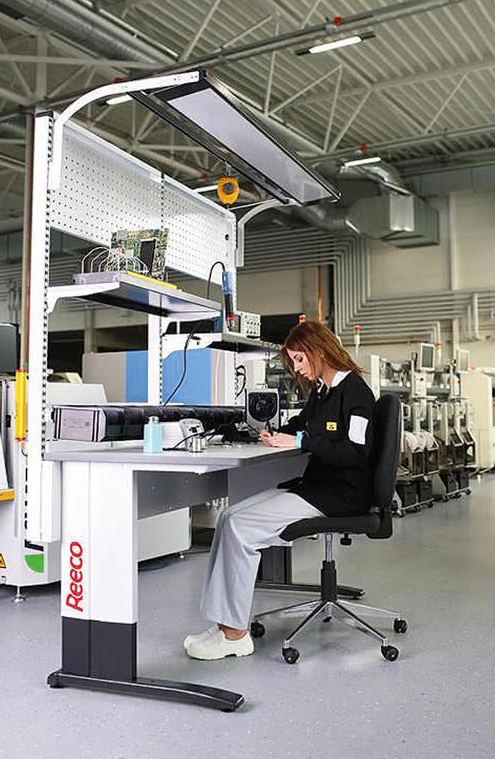
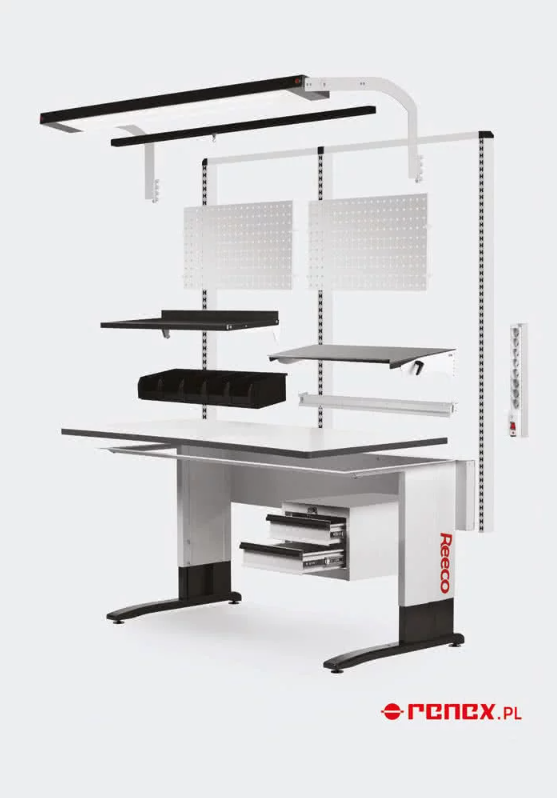
Training of personnel
It is important to remember that no anti-static protection will work properly if it is not backed by proper practice. It is crucial to understand on the part of all those working in the zone the complexity of the issue of antistatic protection, the possible consequences of ignoring it and how to reduce these risks. RENEX Group includes RENEX EEC – the largest authorized IPC Training Center in Central and Eastern Europe – where training courses are conducted for operators and coordinators of EPA zones. These trainings make it possible to educate both those responsible for maintaining ESD protection in a company and to pass on the necessary issues to other employees.
As part of its proprietary training, this center offers courses in anti-static protection – Training RTC-01 Static Electricity – Protection of Electronic Equipment – an 8-hour profile for operators and a 16-hour profile for coordinators. The training for operators is aimed at people who are in contact with electronics in the production or service process and allows them to acquire the knowledge necessary when working with components sensitive to static discharge. The training program covers topics such as the theory of electrification mechanisms, basic knowledge of electrostatic discharge, handling of electronic package components and modules, protection measures, identification of ESDS in equipment (electrostatic discharge sensitive instruments), scope of application of protection, ESDS sensitivity or application of new antistatic technologies, processes and equipment, and more.
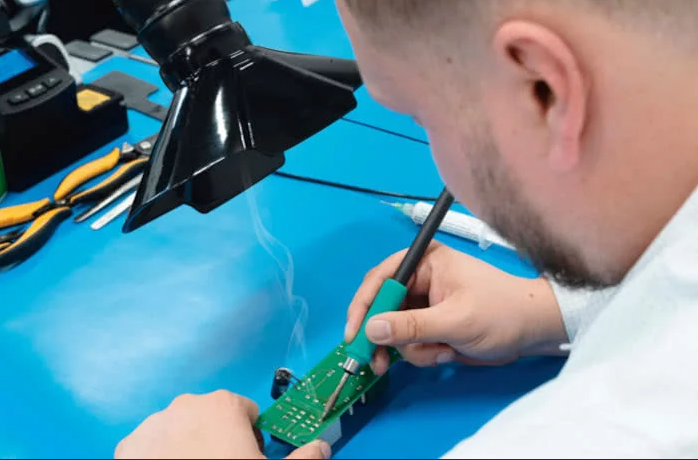
Advanced training – aimed at coordinators, controllers of electrostatic protection (EPA) zones, ESD auditors or employees of companies operating in the electronics industry. The program of this training has been expanded to include such issues as requirements for the establishment and use of ESD-protected zones, the responsibility of employees for the application of protection measures, the role of the ESD coordinator, staff training, conducting audits of EPA zones, creating reports in accordance with international recommendations, or taking measurements and editing reports.
Summary
The development and proper use of the so-called EPA zone is a necessity for many electronic package manufacturing and repair companies. Proper implementation of this task requires the right know-how. Support services in this area – including the creation of new and modification of existing EPA zones, the provision of equipment and training – are provided by RENEX Group.
